In today’s article, we will delve into the world of pressure washers and explore why they are the go-to tool for cleaning concrete surfaces. We will discuss the different types of pressure washers available, including gas-powered and electric models, and highlight the key factors to consider when selecting the right pressure washer for your concrete cleaning needs.
We’ll provide insights into some of the best pressure washers specifically designed for tackling concrete cleaning tasks. To ensure you’re well-equipped for the job, we’ll also share a step-by-step guide on how to properly utilize a pressure washer to achieve optimal results when cleaning concrete surfaces. So, if you’re looking to enhance your concrete cleaning game, this article is your ultimate guide!
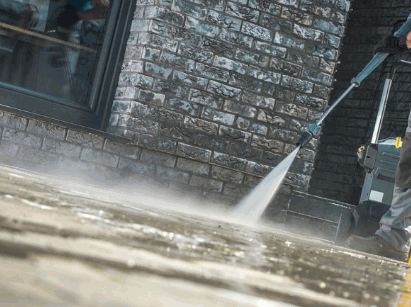
Why Use A Pressure Washer To Clean Concrete?
Using a pressure washer to clean concrete offers a powerful and efficient solution for removing dirt, grime, and stubborn stains from various surfaces.
The impact of water pressure is crucial in achieving thorough cleaning, as it helps to dislodge embedded dirt and stains. The choice of nozzle types, such as adjustable, turbo, or surface cleaners, allows for versatile cleaning options, catering to different levels of dirt and grime.
The use of suitable detergents can enhance the cleaning process by breaking down tough stains and minimizing the effort required. For concrete surfaces like driveways, patios, and walkways, pressure washers provide a time-saving method, effectively restoring them to their original condition. Heavy-duty nozzles or turbo surface cleaners are especially beneficial for tackling challenging cleaning tasks, and ensuring thorough and efficient results.
Delve into: How To Clean Cladding
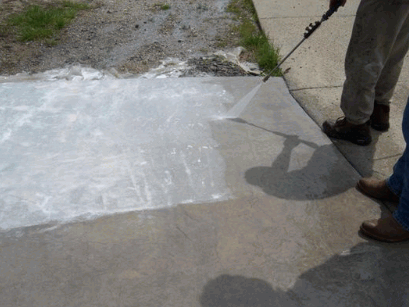
What Are The Types Of Pressure Washers?
Pressure washers come in two main types: gas-powered and electric-powered, each offering distinct advantages in water flow, pressure, and maintenance requirements.
Gas-powered pressure washers are known for their higher psi (pounds per square inch) and GPM (gallons per minute) ratings, making them suitable for heavy-duty cleaning tasks, such as removing stubborn dirt and grime from concrete, decks, and driveways. On the other hand, electric-powered pressure washers are more lightweight and compact, making them easier to maneuver and store. They are well-suited for lighter cleaning duties, like washing cars, outdoor furniture, and windows. The choice between the two types largely depends on the specific cleaning needs, power source availability, and desired portability.
Gas-Powered Pressure Washers
Gas-powered pressure washers offer robust cleaning capabilities, making them ideal for larger surface areas and tough cleaning tasks that require heavy-duty equipment.
These powerful machines are designed to deliver a high-pressure output, enabling them to blast away dirt, grime, and stubborn stains from a variety of surfaces with ease. Their ability to cover large areas efficiently saves time and energy, making them the go-to choice for professional cleaners and homeowners alike.
Gas-powered pressure washers can handle heavy-duty cleaning tasks, such as stripping paint, deep cleaning concrete, and removing tough stains from outdoor surfaces. Their versatility and effectiveness make them indispensable for a wide range of outdoor cleaning applications.
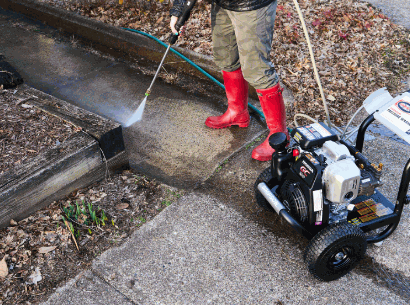
Electric Pressure Washers
Electric pressure washers offer convenient power sources for a range of surface cleaning applications, providing efficient and reliable performance for various cleaning tasks.
Their practicality and versatility make them well-suited for smaller to medium-sized surface areas, such as driveways, decks, patios, and outdoor furniture. Electric pressure washers are equipped to handle cleaning solutions, allowing for enhanced stain and dirt removal. The importance of nozzle tips cannot be overstated, as they provide tailored cleaning for different surfaces, from gentle spray for delicate surfaces to more powerful streams for tougher stains. These features make electric-powered pressure washers ideal for residential and light commercial settings, offering consistent cleaning performance with ease of use and maintenance.
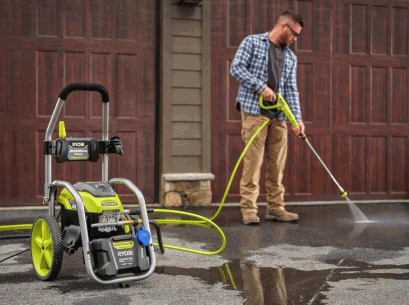
What Are The Factors To Consider When Choosing A Pressure Washer?
When selecting a pressure washer, it is essential to consider key factors such as:
- Water pressure
- Water flow
- Power source
- Portability
to ensure the most suitable equipment for specific cleaning requirements.
These factors play a crucial role in the effectiveness of the pressure washer. The water pressure and flow rates directly impact cleaning effectiveness, as higher pressure and flow rates are typically more effective for tackling tough dirt and grime. The choice between gas-powered or electric models is influenced by individual power source preferences and the specific cleaning tasks at hand.
Portability, on the other hand, is important for maneuverability and accessing different cleaning areas, making it essential for larger outdoor spaces or commercial applications.
Water Pressure
Water pressure, measured in PSI (pounds per square inch), plays a pivotal role in surface preparation and the removal of dirt, grime, and stains from concrete and various other surfaces.
This pressure directly impacts the cleaning effectiveness of a pressure washer. Higher PSI ratings provide greater force to tackle tough cleaning tasks, effectively removing stubborn contaminants. It’s crucial to consider the surface sensitivity when selecting the appropriate PSI levels, as excessive pressure can cause damage to delicate surfaces. By understanding the relationship between water pressure and surface sensitivity, users can optimize the cleaning process for different applications, ensuring thorough and safe results.
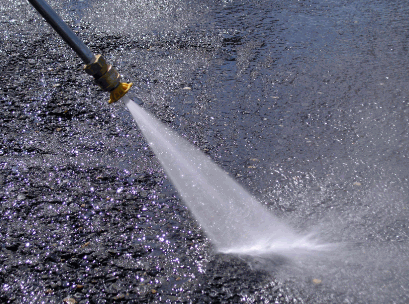
Water Flow
Water flow, measured in gallons per minute (GPM), determines the coverage and rinsing efficiency of a pressure washer, influencing its suitability for different surface areas and cleaning solution applications.
A higher GPM allows for a greater coverage area and faster rinsing, making it ideal for larger surfaces or heavier cleaning tasks. On the other hand, a lower GPM may be more suitable for delicate surfaces or targeted cleaning.
Finding the right balance between GPM and surface area considerations is crucial to maximizing the pressure washer’s performance and efficiency. The water flow rate plays a significant role in the effective application of cleaning solutions, ensuring thorough and even distribution for optimal cleaning results.
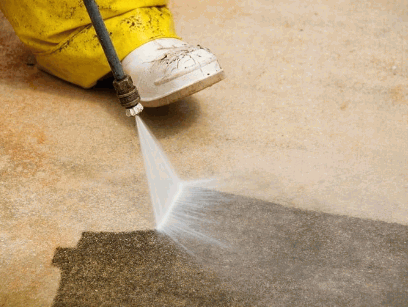
Power Source
The power source of a pressure washer, whether gas-powered or electric, significantly impacts its maintenance requirements, operational convenience, and suitability for different cleaning environments and tasks.
Gas-powered pressure washers are known for their high power output, making them ideal for heavy-duty tasks in commercial and professional settings. They require regular maintenance of the engine, including oil changes and spark plug checks.
On the other hand, electric pressure washers offer quieter operation, are more lightweight, and are often more suitable for residential use. They require minimal maintenance but are limited by the length of the power cord. Considering the specific cleaning needs and frequency of use is crucial in selecting the most appropriate power source for a pressure washer.
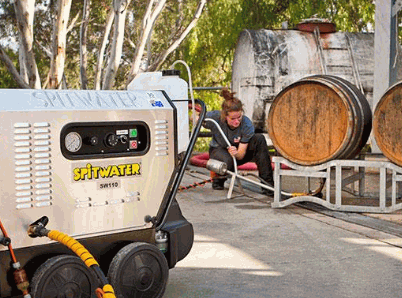
Portability
The portability of a pressure washer, facilitated by features such as wheels and ergonomic handles, influences its maneuverability and accessibility across different cleaning areas and surfaces.
This versatility allows users to efficiently navigate through outdoor spaces, reaching tight corners and inaccessible spots. The ease of transport also enables swift relocation between indoor and outdoor cleaning tasks, increasing productivity.
Portability means the pressure washer can be readily utilized for diverse applications, from outdoor patio cleaning to washing a vehicle in the driveway. These features not only enhance user convenience but also contribute to the overall effectiveness and efficiency of the cleaning process.
What Are The Best Pressure Washers For Cleaning Concrete?
Several top-rated pressure washers are highly effective for cleaning concrete surfaces, with notable options including the Sun Joe SPX3000, Karcher K5 Premium, Simpson Cleaning MSH3125 MegaShot, Greenworks GPW1501, and Ryobi RY14122.
These pressure washers are designed with powerful motors and high-pressure nozzles that can easily remove stubborn oil stains, dirt, and grime from concrete driveways, pathways, and patios.
The Sun Joe SPX3000, with its dual detergent tanks and interchangeable nozzles, offers versatility and convenience. The Karcher K5 Premium‘s water-cooled induction motor provides exceptional performance, making it suitable for heavy-duty concrete cleaning tasks.
The Simpson Cleaning MSH3125 MegaShot excels in portability and durability, while the Greenworks GPW1501 and Ryobi RY14122 are known for their compact design and ease of use, making them perfect for small to medium concrete surfaces.
Sun Joe SPX3000 Electric Pressure Washer
The Sun Joe SPX3000 electric pressure washer is widely recognized for its exceptional cleaning power, versatile performance, and compatibility with various cleaning solutions, nozzle types, and surface cleaner attachments.
Its powerful 14.5-amp motor generates up to 2030 PSI of water pressure and 1.76 GPM of flow for maximum cleaning power, effortlessly removing tough grime and dirt. The SPX3000’s dual detergent tanks allow for convenient switching between different cleaning solutions, enhancing its ability to handle various cleaning tasks.
With five quick-connect spray tips, users can easily switch between different nozzle types for varied cleaning applications. The SPX3000’s compatibility with surface cleaner attachments ensures efficient, streak-free cleaning for concrete surfaces and other outdoor areas. Users consistently highlight the SPX3000’s performance, citing its effectiveness for concrete cleaning and its versatility for a wide range of outdoor cleaning tasks.
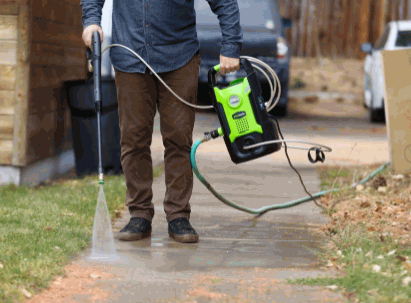
Karcher K5 Premium Electric Power Pressure Washer
The Karcher K5 Premium electric power pressure washer stands out for its exceptional cleaning capabilities, making it an ideal choice for effectively cleaning patios, driveways, and various outdoor surfaces with versatile attachment options.
Its robust motor and high-pressure output enable it to effortlessly remove stubborn dirt, grime, and mold from concrete, brick, and stone surfaces. The included Vario Power Spray wand allows users to adjust the water pressure to suit different cleaning tasks, providing a customized cleaning experience. With additional attachments like the DirtBlaster spray wand and surface cleaner, users can achieve thorough and efficient cleaning results on a wide range of outdoor surfaces.
Customers have reported significant satisfaction with the Karcher K5 Premium, praising its reliability and real-world performance in tackling tough cleaning jobs on patios and driveways, making it a valuable tool for maintaining outdoor spaces.
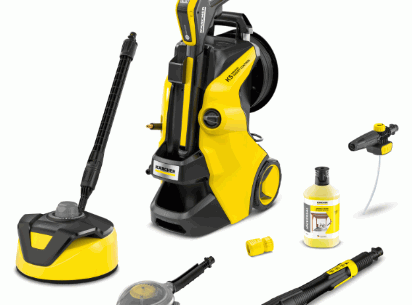
Simpson Cleaning MSH3125 MegaShot Gas Pressure Washer
The Simpson Cleaning MSH3125 MegaShot gas pressure washer is renowned for its heavy-duty performance, optimal cleaning power, and the effectiveness of its turbo surface cleaner attachment for challenging outdoor cleaning tasks.
It delivers a robust power output, making it ideal for tackling tough dirt, grime, and stubborn stains on various outdoor surfaces. Users have praised its ability to effortlessly clean concrete driveways, patios, and decks. The turbo surface cleaner attachment ensures a thorough and efficient cleaning process, covering large areas with ease. With its durable construction and reliable performance, the Simpson Cleaning MSH3125 MegaShot is a popular choice for homeowners and professionals alike in handling demanding outdoor cleaning tasks.
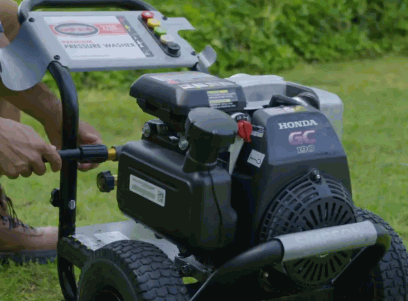
Greenworks GPW1501 Electric Pressure Washer
The Greenworks GPW1501 electric pressure washer offers reliable cleaning performance, compatibility with surface cleaner attachments, and the flexibility to utilize various cleaning solutions and nozzle tips for tailored cleaning outcomes.
Users have praised the GPW1501 for its ability to effortlessly clean concrete driveways, patios, and decks, providing impressive results. Its compact design makes it convenient for outdoor cleaning tasks, and it is often commended for its ease of use and portability.
The pressure washer’s adaptability to different cleaning solutions and nozzle tips allows users to customize their cleaning approach, ensuring efficient and thorough results for various surfaces.
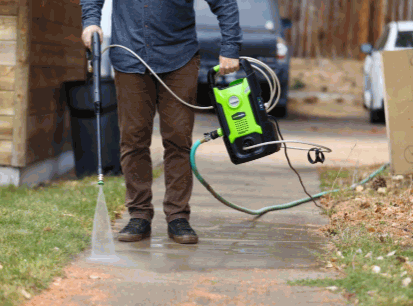
Ryobi RY14122 Electric Pressure Washer
The Ryobi RY14122 electric pressure washer is lauded for its efficient cleaning performance and is particularly suitable for effectively cleaning patios, driveways, and various outdoor surfaces with a range of compatible attachments.
Providing a maximum pressure of 1700 PSI and a flow rate of 1.2 GPM, this pressure washer tackles tough dirt and grime effortlessly. Users appreciate its convenience and ease of use, especially when customizing cleaning applications with the available range of attachments. Its compact design and lightweight nature make it highly maneuverable, allowing users to clean various outdoor surfaces with precision. With the exceptional cleaning power it offers for concrete and diverse outdoor areas, it has gained a solid reputation among homeowners for its effectiveness.
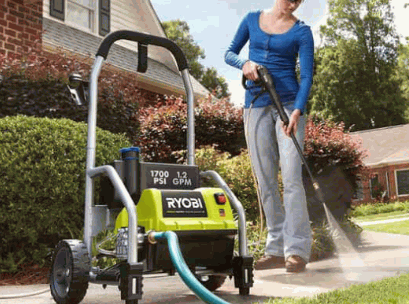
How To Properly Clean Concrete With A Pressure Washer?
Properly cleaning concrete with a pressure washer involves a systematic process, including area preparation, nozzle selection, optional detergent application, effective pressure washing, and thorough rinsing and drying for optimal results.
Begin the cleaning process by inspecting the concrete area for any debris, loose dirt, or stains. Remove any loose debris and sweep the surface thoroughly to ensure a clean working area.
When selecting the right nozzle for your pressure washer, consider using a wide-angle nozzle for gentle cleaning and a narrow-angle nozzle for tougher stains. Optionally, apply a suitable detergent to the concrete surface to break down stubborn grime. Maintain a safe distance, usually around 8-12 inches, from the surface when pressure washing to prevent damage.
After pressure washing, rinse the concrete surface thoroughly and allow it to dry completely before use. Always prioritize safety by wearing protective gear and ensuring proper maintenance of the pressure washer equipment.
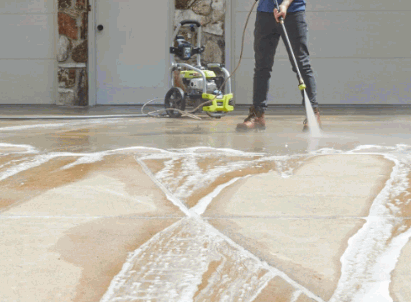
Prepare The Area
Thoroughly preparing the cleaning area before pressure washing involves:
- Clearing debris is crucial as it prevents potential damage and interference during the pressure washing process.
- Identifying sensitive items such as plants, fragile surfaces, and outdoor furniture to ensure they are adequately protected or relocated.
- Ensuring the availability of necessary cleaning solutions, safety equipment such as goggles, gloves, hearing protection, and operational instructions for the pressure washer.
Equally important is having suitable cleaning solutions, safety gear such as goggles, gloves, and hearing protection, as well as a clear understanding of the pressure washer’s operation to ensure a safe and efficient cleaning process.
Choose The Right Nozzle
Selecting the appropriate nozzle for pressure washing involves considering nozzle tips, surface preparation requirements, and safety considerations outlined in the equipment manual or operational instructions.
By understanding the impact of the nozzle choice on cleaning effectiveness, safety, and surface sensitivity, users can make informed decisions to achieve tailored cleaning outcomes. Different tasks, such as removing dirt from a delicate surface or tackling tough stains on concrete, may require varied nozzle selections and surface preparation techniques.
It is crucial to adhere to the specified safety measures to ensure smooth and risk-free operations while following the guidelines provided in the equipment manual or operational instructions.
Apply Detergent (Optional)
The optional application of detergent or specialized cleaning solutions before pressure washing facilitates deep cleaning, stain removal, and the preparation of surfaces for more effective and thorough cleaning outcomes.
This pre-treatment process can be particularly beneficial for surfaces with deeply embedded grime, grease, or stubborn stains, as it helps to break down and dissolve these tough residues. The use of cleaning solutions can also aid in preparing the surfaces for a more thorough cleaning by loosening and lifting debris, making the pressure washing process more efficient. It’s important to consider the compatibility of the cleaning solutions with different nozzle tips, as this can influence the effectiveness of both surface preparation and the overall cleaning process. By selecting the appropriate cleaning solution and adjusting the nozzle tip accordingly, users can achieve optimal results in achieving a clean and refreshed appearance for various surfaces.
Begin Pressure Washing
Initiating the pressure washing process involves maintaining an optimal distance from the surface, adjusting the nozzle settings, and systematically cleaning the area while ensuring the compatibility of cleaning solutions with the chosen nozzle tips for effective cleaning outcomes.
By keeping a safe distance from the surface, typically around 6-12 inches, you can prevent damage from excessive pressure. Adjusting the nozzle settings allows for tailored cleaning, with wider sprays suitable for larger areas and narrower sprays for concentrated cleaning. It’s essential to follow a systematic approach, starting from the top and working downwards to avoid streaking. Always ensure that the cleaning solutions used are appropriate for the nozzle tips selected to achieve optimal cleaning results. Adhere to safety guidelines for personal protection and prepare the surface adequately for the best cleaning performance.
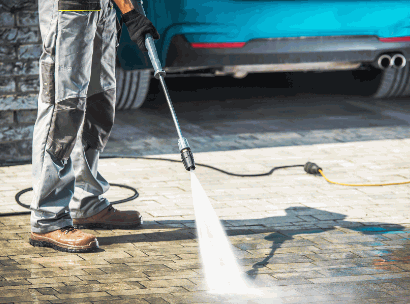
Rinse And Dry The Area
Thoroughly rinsing and drying the cleaned area after pressure washing ensures the removal of cleaning residues, the maintenance of surface integrity, and the enhancement of safety by eliminating slip hazards and moisture accumulation.
This step is crucial as it prevents any leftover cleaning agents from causing streaks or damage to the surfaces. Thorough rinsing and drying help preserve the structural integrity of the materials being cleaned, thereby extending their lifespan. It also contributes to safety by reducing the risk of slip and fall accidents due to leftover moisture.
Proper maintenance of the pressure washer and adherence to safety guidelines for handling and storing cleaning equipment are essential to ensure efficient and safe usage in the long term.

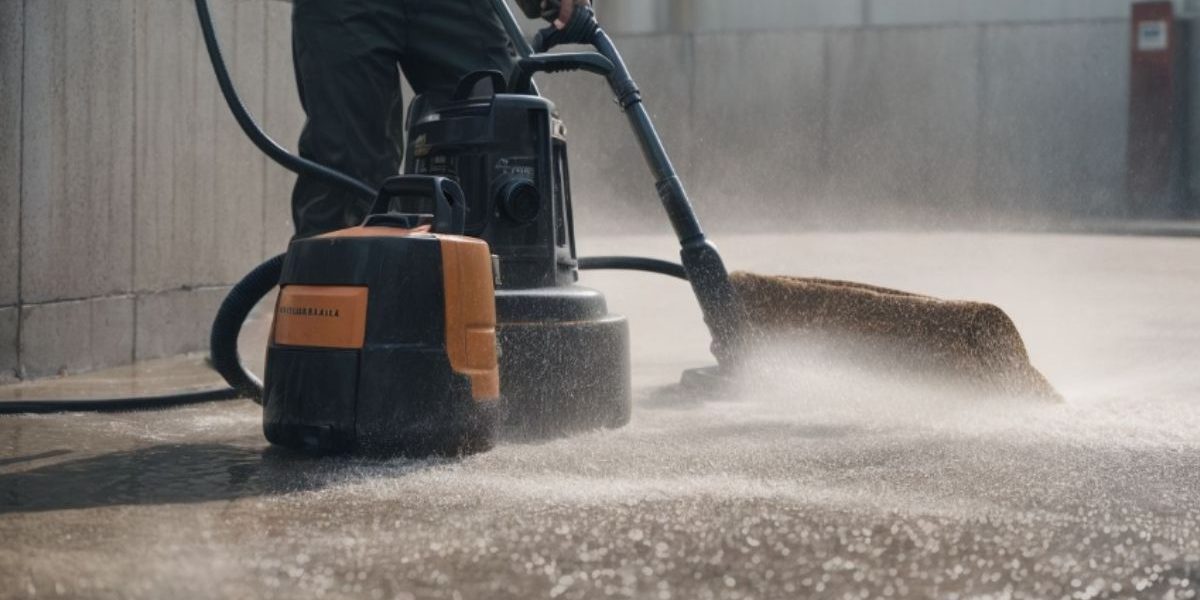
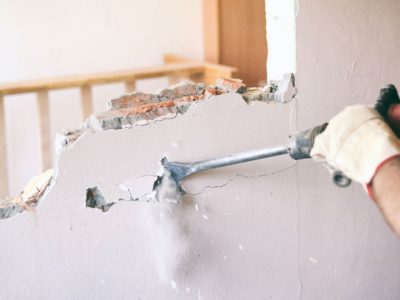

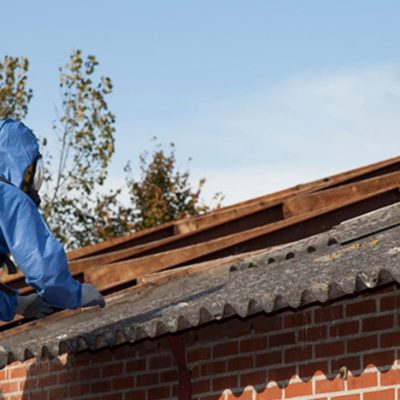
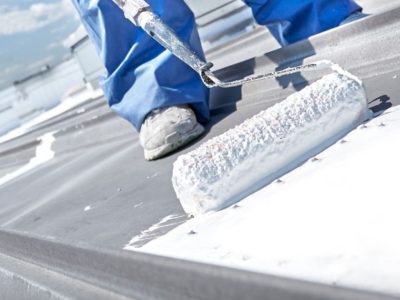
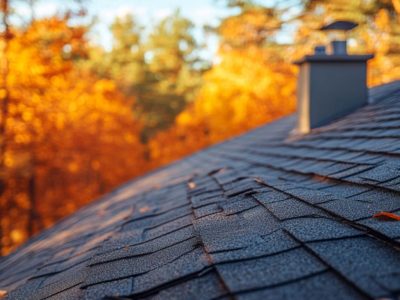
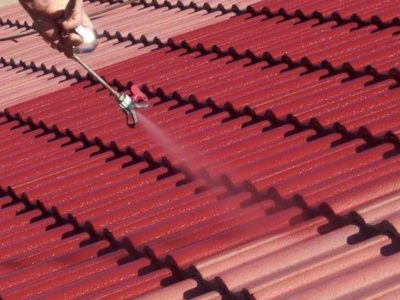

Comments